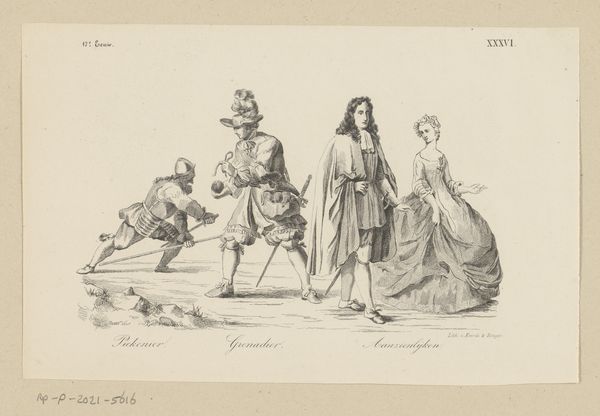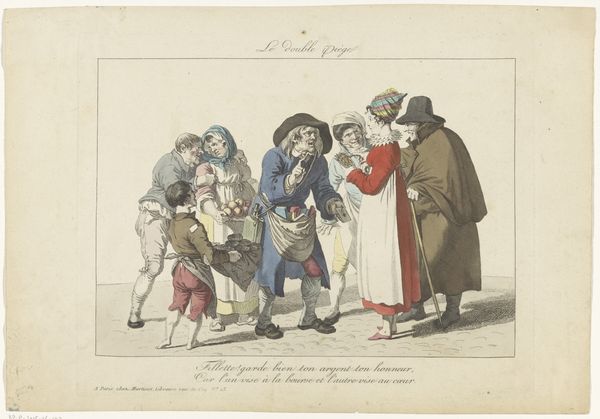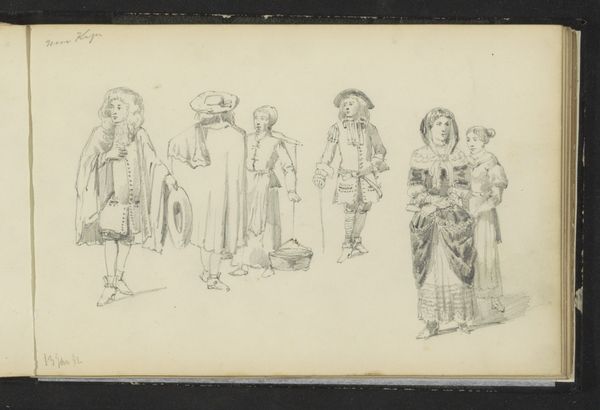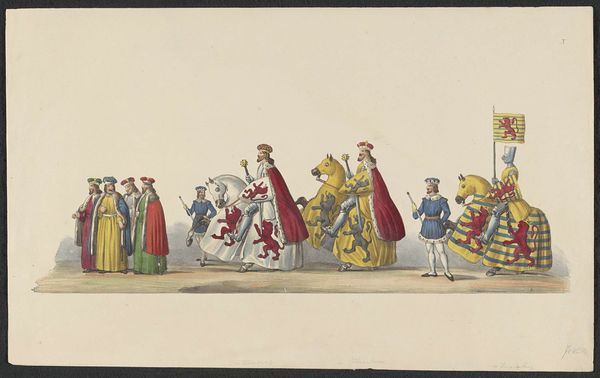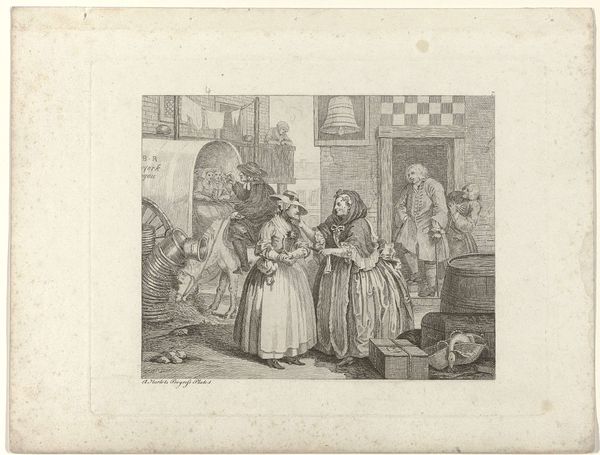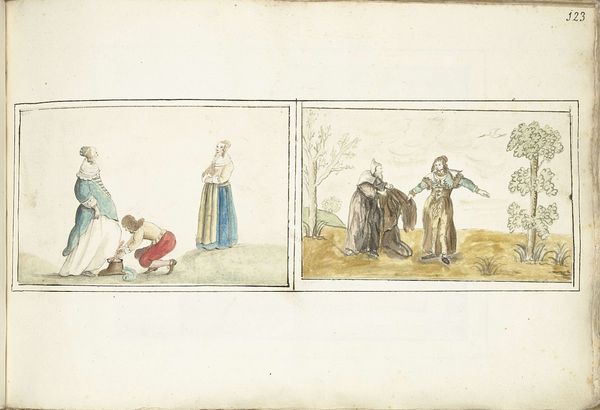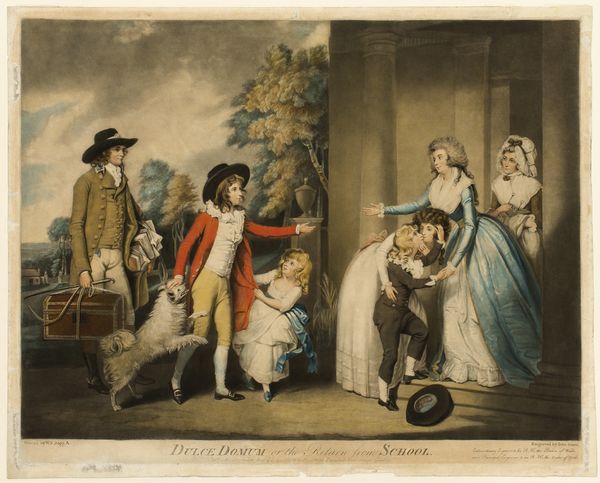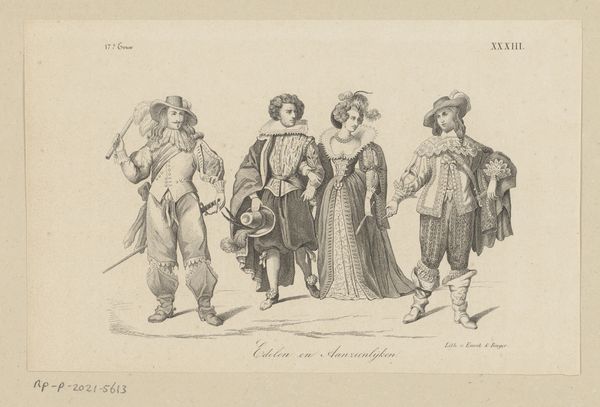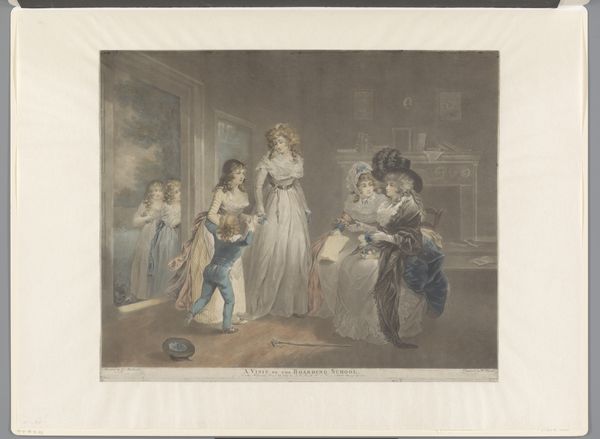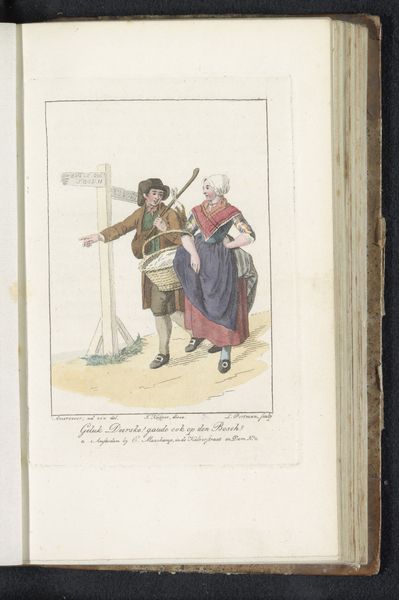
drawing, mixed-media, watercolor
#
portrait
#
drawing
#
mixed-media
#
figuration
#
11_renaissance
#
watercolor
#
coloured pencil
#
genre-painting
#
mixed media
#
watercolor
Copyright: Rijks Museum: Open Domain
Curator: We’re looking at "Groep figuren in zeventiende-eeuwse kleding" by Cornelis Springer, likely created sometime between 1846 and 1882. It's currently held here at the Rijksmuseum. It appears to be mixed media, watercolor, and colored pencil on paper. Editor: My first impression is that it captures a sense of nostalgic reverence, even idealization, of a bygone era. There's a quiet dignity in the figures, but something also feels... rehearsed. Curator: I agree. Springer's careful orchestration of color contributes greatly to this. Notice how the muted blues and browns dominate, lending the work a tonal coherence. And consider the way the figures are placed, their lines and volumes clearly delineated but without overly strong contrasts. It emphasizes order, stability... Editor: Which is fascinating because the 17th century, at least through our contemporary lens, feels anything but orderly. This choice to depict it this way – as this vision of controlled elegance – speaks volumes. The figures themselves, with their rigid postures and controlled gestures, seem burdened by an idea. I wonder what narrative that composition creates? Curator: The semiotics of dress are intriguing. Their clothing is not strictly of the seventeenth century, but more a pastiche – a conscious artistic reconstruction, rather than an historically accurate depiction. Springer selectively appropriates elements. Look, for instance, at the simplification of the ruffs and cuffs. Editor: Right, a carefully curated symbolic language. They stand as emblems of aspiration, perhaps speaking to 19th-century desires for a connection with what they imagined the Dutch Golden Age to be. Each figure, even the child, carries a hat. Curator: Hats as a status marker – essential to any full realization of their social standing, as in traditional portraiture. And consider their relationships, how Springer has arranged them... They have the sense of stage actors frozen between the lines. Editor: It is quite stage-like! Almost a tableau vivant – a frozen theatrical scene. Interesting to think about this drawing functioning not as historical record, but as a commentary of that need of the present to recall a golden past. It’s really quite lovely! Curator: Precisely, it offers us more insight into the sensibilities of the 19th century, and perhaps a sense of why they felt it was critical to portray history through a specific visual strategy. It prompts you to reevaluate what narrative value exists here.
Comments
No comments
Be the first to comment and join the conversation on the ultimate creative platform.
